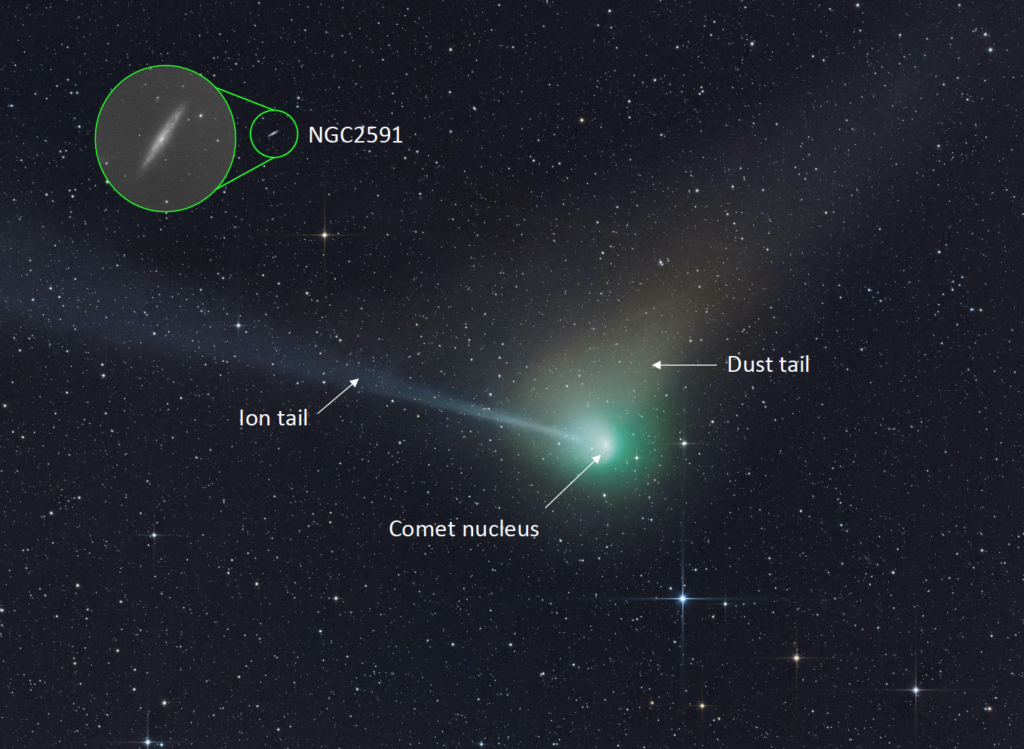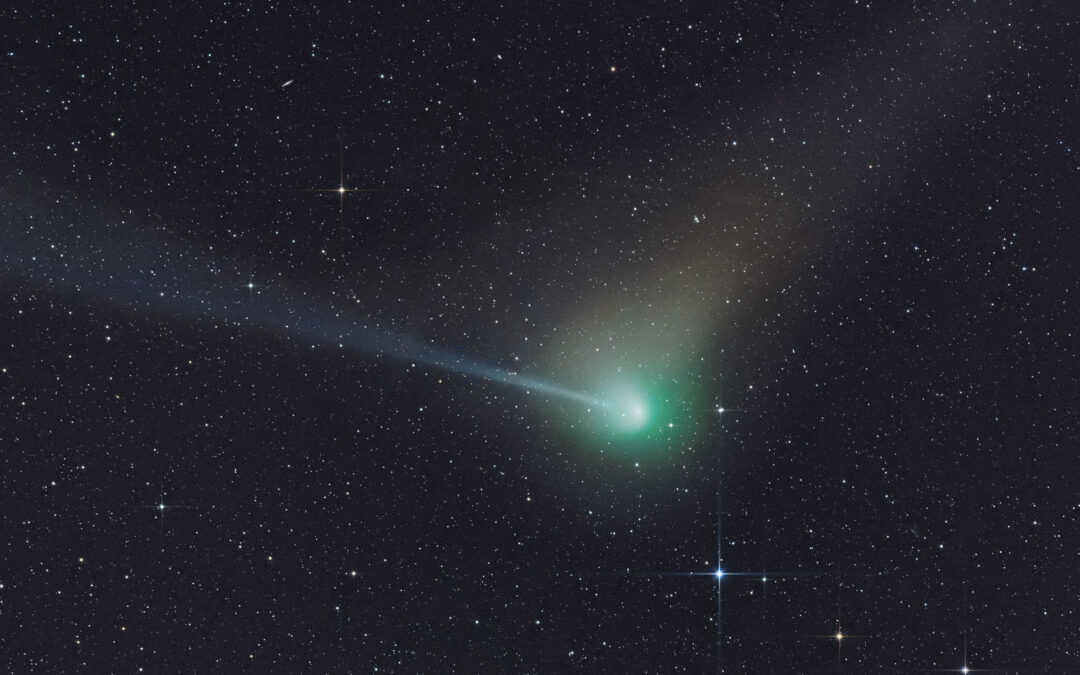Photo: Comet C/2022 E3 (ZTF) passing close to NGC2591, December 27th, 2022.
BY BRYONY RICHARDS, Ph.D.
During the Upper Paleolithic, some 50,000 years ago, the Earth was still in a glacial period; megafauna (think Dire wolves, Smilodon, and Megatherium) roamed the land, and humans and Neanderthals both inhabited our planet. 50,000 years ago, was also the last time comet C/2022 E3 (ZTF) was visible from Earth, probably as a faint green speck crossing the nights sky. Who knows what our ancestors thought of this strange sight in their normally familiar night sky. They were, however, unlikely to be as thrilled as the hordes of astronomers trying to catch a photo of this fast-moving, short-lived target, me included.
Jump forward to March 2022 and astronomers at the Zwicky Transient Facility at the Palomar Observatory, California first discover C/2022 E3 (ZFT). This new long-period comet, last seen by humans and Neanderthals alike, was due to come close to Earth during the early months of 2023.
As its catchy name, containing the letter ‘C’ would suggest the comet is a long period comet (>200 years to orbit the sun), stemming from the cometary reservoir of the Oort Cloud.
As a side note, comets are pretty special; these “dirty snowballs”, made up of dust, rock, and ice, offer a pristine view into our solar system and its formation across billions of years. There is evidence to suggest that water on Earth originated from comets that impacted in the early years of our planet’s formation. Even the tails of comets have been vital to scientific understanding, with solar winds discovered through the analysis of comet tails 70 odd years ago.
As with most comets, ZTF has two tails; one composed of ionized gas, and another of dust. The third ‘anti tail’ reported as present, is actually part of the dust tail and just an optical illusion due to our point of view on Earth. As ZTF approached the inner Solar System, solar radiation caused volatile material to vaporize from its surface and stream out of the comet nucleus as a green glow. Comet ZTF’s bright green glow reveals the chemicals it is composed of, with dicarbon dominating emissions.
In comparison to the large dust molecules of the (messy-looking) dust tail, the smaller molecules of the ion tail glow due to fluorescence creating a vibrant blue color. As mentioned above, the ion tails of comets precipitated the discovery of solar winds, and within the tail of ZTF disruption due to these winds is present. For the geologically inclined among us, the ion tail, if you look closely, almost looks like en echelon veining.


